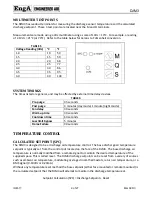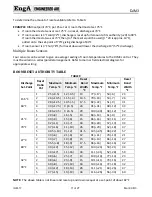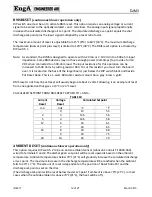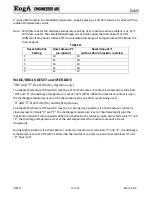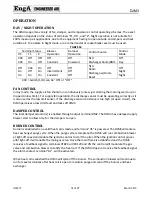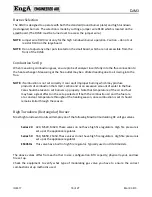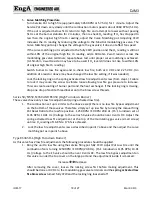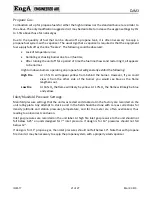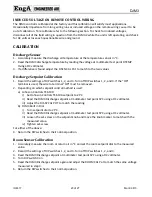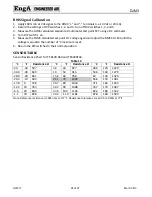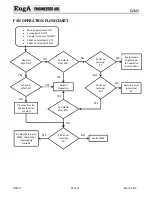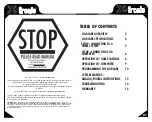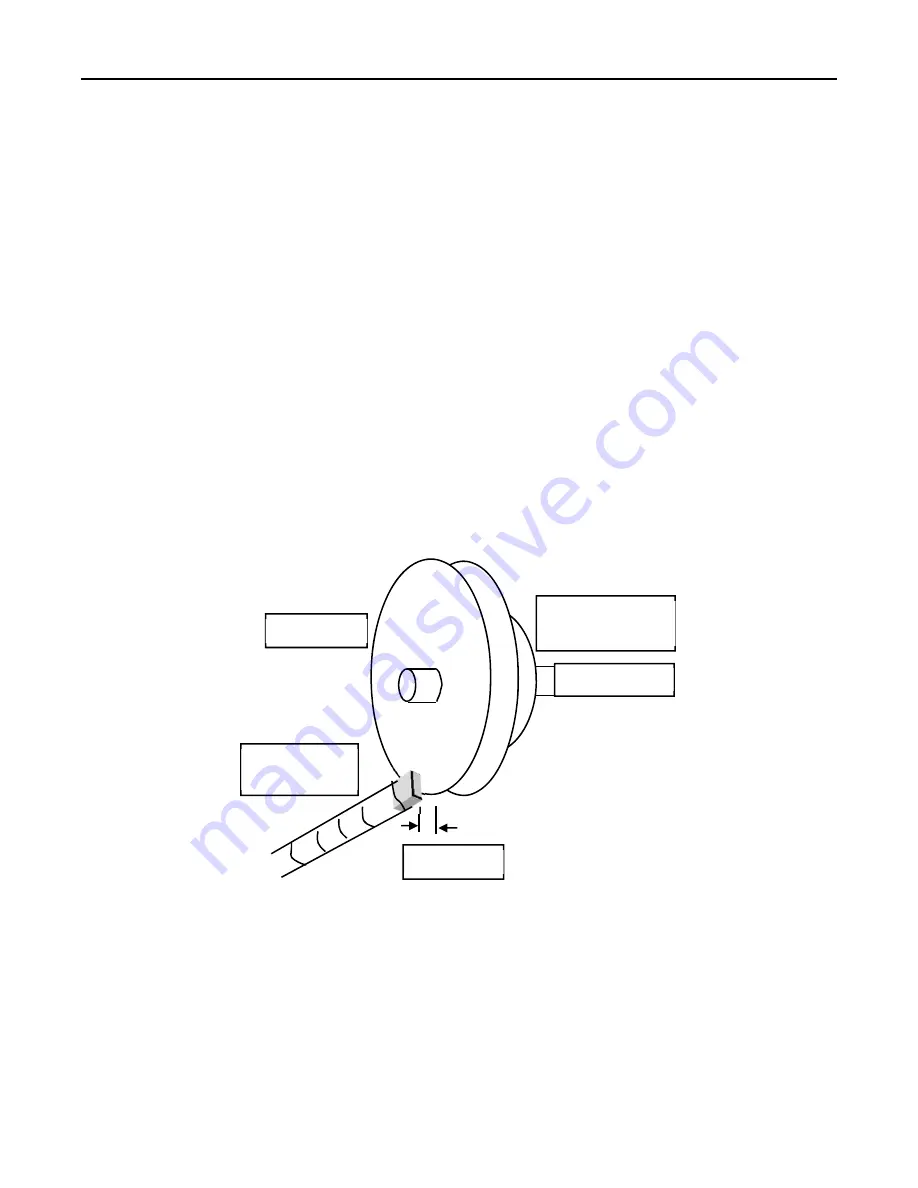
A
DJM3
IOM-17
22 of 27 Mar 99 R3
TEMPERATURE
CONTROL
Modulation of the firing rate is gradually made until the discharge air temperature is within
1.5°F of
the “calculated” set‐point. When the heat load is light and the burner is cycling between low fire and
off there will be small temperature swings.
AIR
BALANCING
Installation and air balancing is often done during warmer weather than that experienced in the cold of
winter. If the air balancer did not allow for the changes that will occur in air volume in cold weather
then the unit will appear to be short of temperature rise. As the fan is a constant volume device and as
it is located before the heat exchanger, air will expand as it is heated. The amount of change will be
about 20% increase in air volume from ‐30°F to +70°F.
PRE
‐
PURGE
PROBLEM
If a Pre‐Purge problem is found, typically the DJM3 is receiving a signal from the tachometer sensor
(Hall Effect sensor) that is not consistent with the combustion blower status. If there is a call for heat
and the combustion blower is not running the DJM3 has likely detected a false or grounded
tachometer signal. Remove all three wires to terminals O, YS, and G. If the combustion blower fails to
start, check the combustion motor and or motor wiring.
If the combustion blower is running and the tachometer signal is absent, weak, or grounded. With a
digital AC voltmeter, measure the AC volts present on terminals “YS to G”. When the combustion
blower is running there should be 4 to 6 Vac present. If the AC voltage
is not present, check the
tachometer sensor to magnet gap. It should be 1/16 to 1/8 inch. If the gap is satisfactory, attempt to
repair by flipping the magnet over, then flipping the tachometer sensor over, before replacing the
tachometer sensor to correct the problem.
Note: No part of the speed sensor’s sensing element should be located over the end of blower motor
shaft.
Blower Shaft
1/8” Gap
Magnet
Magnet
Retainer Ring
Hall Effect
Sensor


